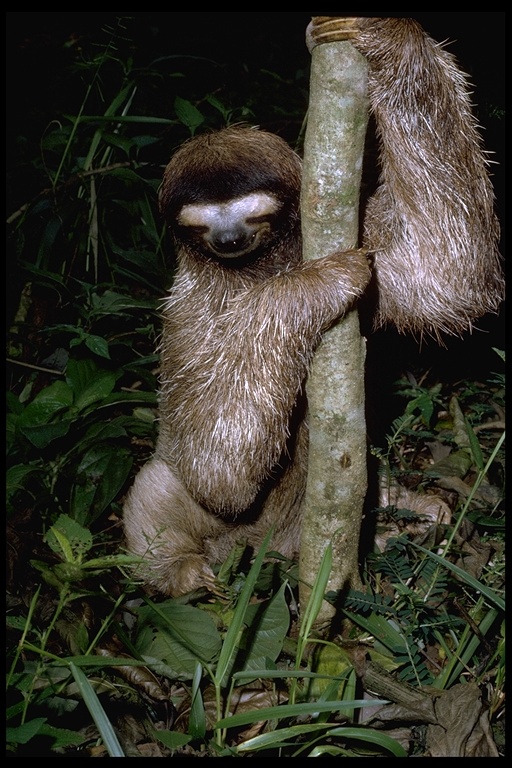nUTRITION
When the Bradypus tridactylus isn't sleeping its spends the bulk of its time searching for, and eating, food. Bradypus tridactylus is herbivorous and feeds mostly on buds, twigs, and leaves of Cecropia trees. Cecropia trees are the most abundant trees in the Amazonian Rainforest making it so the B. tridactylus has an enormous supply of food. When feeding the sloth uses its forelimbs to slowly bring food to its mouth. To get its water, B. tridacylus eats juicy plants and licks water from the leaves of trees.
Much of what the B. tridactylus eats is not easily digestible. Due to this the B. tridactylus must slow down its food intake to allow time for things to get digested. By means of bacterial fermentation, digestion occurs over extended periods of time to allow the sloth to absorb more nutrients. Sloths don't have much energy to spare due to their slow digestion explaining why they move so slow, which is to conserve energy.
 Bradypus tridactylus only comes
down from the canopy when they need to defecate or urinate. When
doing so, it holds onto the base of the tree and makes a hole
with its tale where it deposits its waste products. Because
their digestion is so slow, they do this once or twice a week.
Bradypus tridactylus only comes
down from the canopy when they need to defecate or urinate. When
doing so, it holds onto the base of the tree and makes a hole
with its tale where it deposits its waste products. Because
their digestion is so slow, they do this once or twice a week.
Due to the algae on the B. tridactylus' back, it has become a host to many species of insects and a certain species of moth called Cryptoses choleopi. These moths feed off of the excretions from the algae, and their larva feed on the sloths dung along with the other insects.
For species interactions click here.

